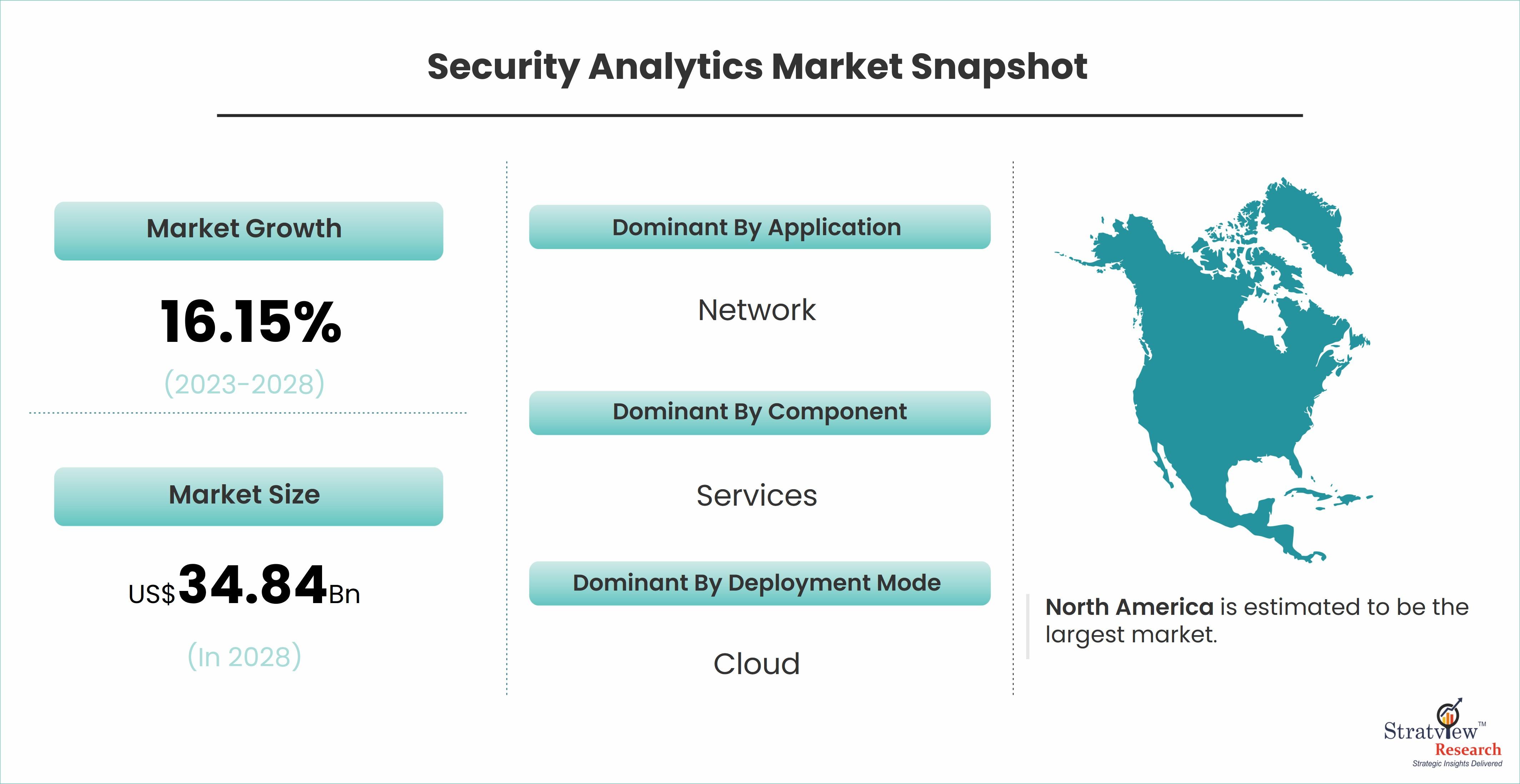Securing Tomorrow: Innovations in Security Analytics

According to Stratview Research, the security analytics market was estimated at USD 14.13 billion in 2022 and is likely to grow at a CAGR of 16.15% during 2023-2028 to reach USD 34.84 billion in 2028.
In an era characterized by digital transformation and unprecedented connectivity, the importance of cybersecurity cannot be overstated. As organizations grapple with evolving cyber threats and increasingly sophisticated attack vectors, the role of Security Analytics has become paramount in safeguarding sensitive data, critical infrastructure, and organizational assets. In this article, we explore the latest trends in Security Analytics and how they are shaping the future of cybersecurity.
1. Convergence of Data Sources
One of the prevailing trends in Security Analytics is the convergence of data sources. Traditionally, Security Analytics solutions focused on analyzing security logs and network traffic data. However, as organizations adopt cloud services, IoT devices, and hybrid IT environments, the volume and diversity of data sources have expanded exponentially. Modern Security Analytics solutions are now capable of ingesting and analyzing data from a myriad of sources, including cloud platforms, endpoints, applications, and even social media feeds. By aggregating and correlating data from disparate sources, organizations gain comprehensive visibility into their security posture and can detect threats more effectively.
2. Adoption of Artificial Intelligence and Machine Learning
Artificial Intelligence (AI) and Machine Learning (ML) are revolutionizing the field of Security Analytics. These advanced analytics techniques enable Security Analytics solutions to identify patterns, anomalies, and potential security incidents with unparalleled speed and accuracy. AI-powered Security Analytics solutions can analyze vast amounts of data in real-time, detect emerging threats, and automate response actions, thereby augmenting the capabilities of cybersecurity teams and enabling them to focus on strategic threat hunting and mitigation efforts. As AI and ML technologies continue to mature, we can expect to see further advancements in threat detection, predictive analytics, and automated response orchestration within the Security Analytics landscape.
3. Shift towards Predictive Analytics
In addition to detecting and responding to security incidents in real-time, Security Analytics is increasingly focusing on predictive analytics capabilities. Predictive analytics leverages historical data, threat intelligence feeds, and advanced algorithms to anticipate and proactively mitigate emerging threats before they materialize into full-blown attacks. By analyzing past attack patterns, identifying potential vulnerabilities, and correlating disparate data points, predictive analytics empowers organizations to stay one step ahead of cyber adversaries and preemptively fortify their defenses. As organizations strive to adopt a proactive approach to cybersecurity, predictive analytics will play a crucial role in safeguarding against future threats.
4. Integration with Threat Intelligence Platforms
The integration of Security Analytics with Threat Intelligence Platforms (TIPs) is another notable trend in the cybersecurity landscape. TIPs aggregate and analyze threat intelligence feeds from a variety of sources, including commercial vendors, open-source communities, and government agencies. By integrating Security Analytics with TIPs, organizations can enrich their security analytics data with contextual threat intelligence, such as known indicators of compromise (IOCs), attacker tactics, techniques, and procedures (TTPs), and emerging threat trends. This integration enables Security Analytics solutions to prioritize alerts, correlate security events, and provide actionable insights to cybersecurity teams, thereby enhancing threat detection and response capabilities.
Conclusion
As organizations navigate an increasingly complex and dynamic threat landscape, the role of Security Analytics has never been more critical. By embracing emerging trends such as data convergence, AI and ML adoption, predictive analytics, and integration with threat intelligence platforms, organizations can strengthen their cybersecurity posture and safeguard against evolving threats. As we look to the future, the continued evolution and innovation in Security Analytics will be instrumental in safeguarding the digital assets and infrastructure of organizations worldwide. By staying abreast of these trends and leveraging advanced Security Analytics solutions, organizations can proactively safeguard their future in an ever-evolving cybersecurity landscape.
- Questions and Answers
- Opinion
- Motivational and Inspiring Story
- Technology
- True & Inspiring Quotes
- Live and Let live
- Focus
- Art
- Causes
- Crafts
- Dance
- Drinks
- Film/Movie
- Fitness
- Food
- Игры
- Gardening
- Health
- Главная
- Literature
- Music
- Networking
- Другое
- Party
- Religion
- Shopping
- Sports
- Theater
- Wellness
- News
- Culture

